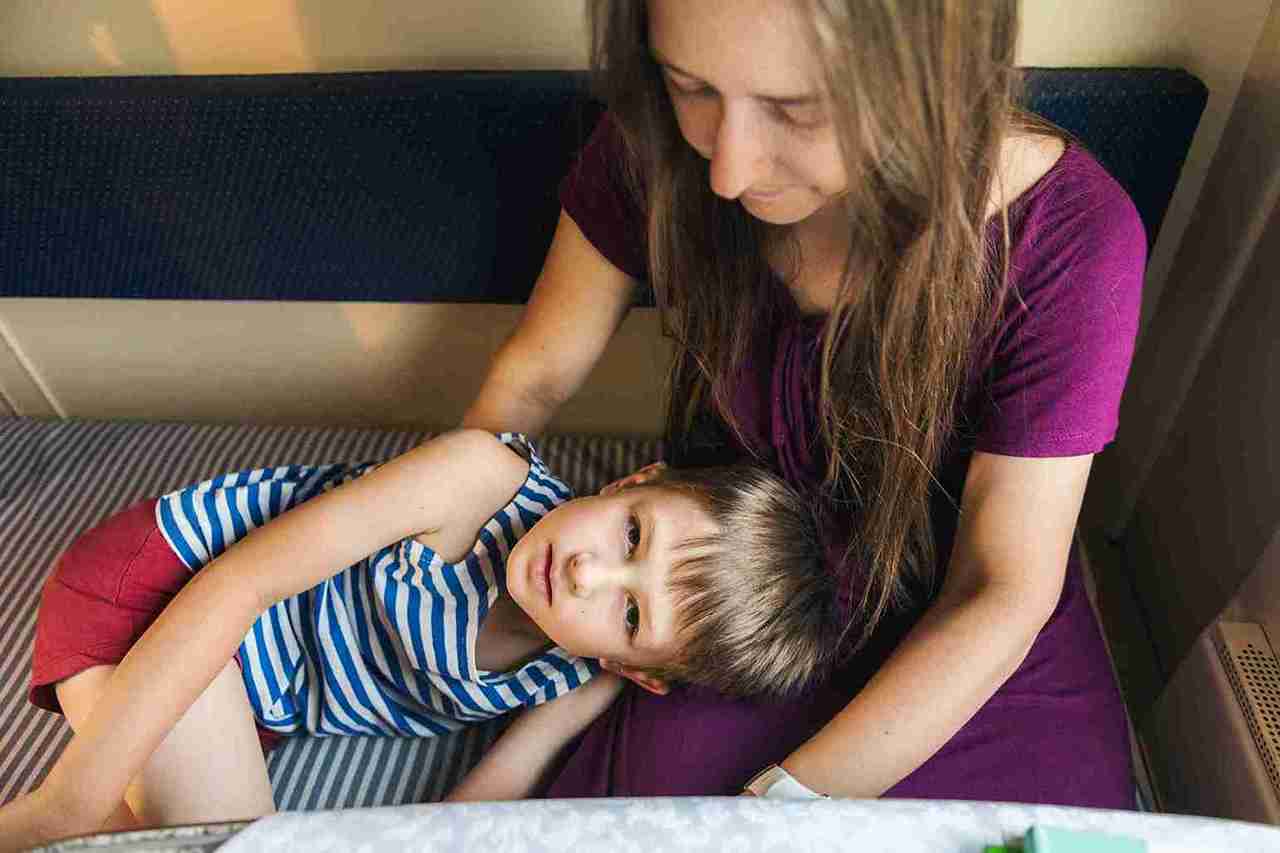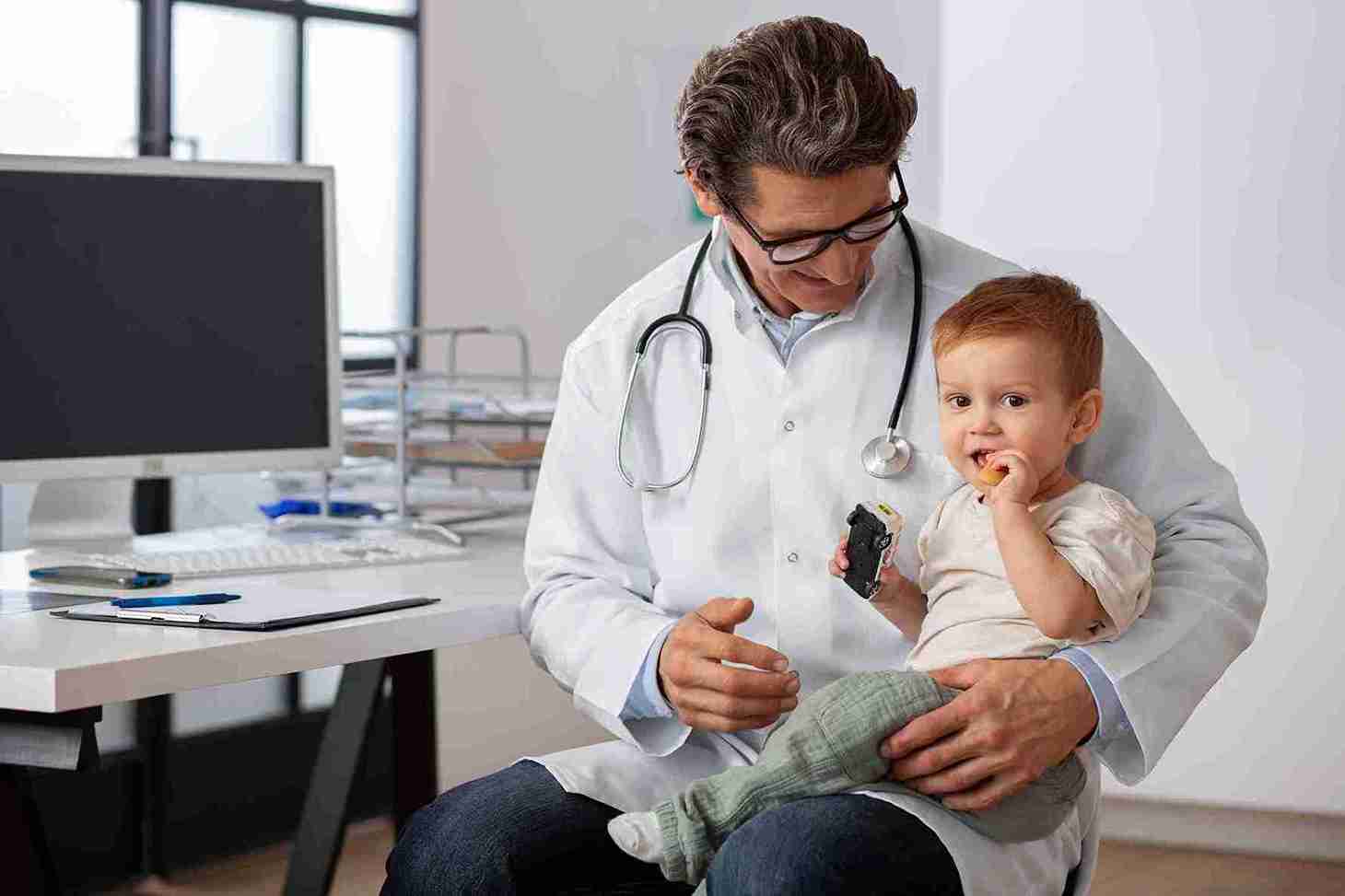
Seizures in toddlers can be frightening for any parent. Watching a young child suddenly lose control of their body is a deeply unsettling experience. While the fear is real, understanding what seizures are, why they happen, and how to respond can help parents feel more prepared and confident in caring for their child.
In this article, we shall take a closer look at each and every aspect of this condition and provide practical tips on how parents and caregivers can help manage this in kids.

The brain is made up of nerve cells (neurons) that communicate using tiny electrical signals. These signals help control everything we do, like moving, speaking, or thinking. However, during a seizure, many neurons fire all at once in a chaotic way, thereby causing unusual brain activity. This can lead to changes in movement, behaviour, awareness, or sensations, depending on which part of the brain is affected.
There are a few events that can lead up to the toddler having seizures. These are called seizure triggers. Let’s take a quick look at some of the situations that may be potential triggers:
● Bright flashing lights or other similar visual stimuli.
● Certain medications.
● Excessive fatigue and stress.
● Illnesses like fever.
Children prone to seizures may need help in managing such situations safely.
There are different types of seizures in children. Here are a few of the most common types that affect toddlers:
Focal seizures start in one specific part of the brain and may occur in any lobe. In most cases, this kind of seizure is preceded by a hard-to-describe sensation called an aura, whereby the child experiences strange differences in the environment around them.
These seizures are usually brief and may even last less than a minute. In most cases, the child stays conscious throughout the seizure. The symptoms depend on which part of the brain is affected. They often cause jerking or unusual movements in just one part of the body, like the fingers or legs. If the part of the brain that controls vision is affected, your child might have trouble seeing clearly for a moment. Physical signs may include sweating, nausea, or paleness. In some types of focal seizures, awareness may be altered. The child might show unusual behaviours such as lip smacking, gagging, crying, laughing, or sudden movements like running.
After the seizure ends, during the recovery phase (called the postictal period), your child may feel tired or confused for a short time.
When it strikes, generalised seizures affect both sides of the brain and can be categorised as:
Non-motor (Absence Seizures)
Absence seizures, also known as ‘petit mal seizures,’ are one of the most common paediatric seizures, and they typically affect kids from the age of four to twelve. This seizure usually lasts less than 30 seconds and may happen several times a day. When a child experiences this type of seizure, there won’t be much movement. In fact, it may even seem like they are simply daydreaming. Onlookers may notice their mouths or faces twitching or their eyes blinking quickly. The child usually will have no recollection of the seizure and will proceed with their activities as usual.
Motor seizures are a type of generalised seizure that affects the body’s muscles, causing them to stiffen or weaken temporarily. There are four main types:
Often referred to as ‘drop attack’ seizures, this seizure leads to a sudden loss of muscle tone and results in the child suddenly becoming weak and unconscious and falling to the ground.
Myoclonic seizures cause sudden, brief jerks or twitches in the muscles in the shoulders, arms or neck. This can happen on one or both sides of the body at the same time. Children are usually conscious and alert during the seizure and right afterwards. These seizures often come in clusters, which means they may happen several times in a day or over a few days.
During tonic seizures, the muscles will suddenly stiffen, and the child may fall to the ground, unable to move.
This seizure affects the whole body and may happen in stages. It can start with the body stiffening, followed by strong jerking movements of the arms and legs. These seizures usually last a few minutes.
After the seizure, your child may feel very tired or sleepy. They might have a headache, body aches, or trouble speaking or seeing clearly for a short time. Symptoms can vary from one child to another.
This is a much more serious type of seizure that requires immediate medical care. During this type of seizure, the child may experience convulsions for five to more than thirty minutes. With such long-lasting seizures, the chance of being permanently brain-damaged is very high, so rescue medications need to be kept on hand by caregivers at all times.
Febrile seizures in toddlers are quite common and are usually triggered by a high fever. There will be either mild stiffening of the limbs or severe convulsions or muscle spasms.

Toddler seizures can occur due to:
● Congenital disorders
● Fevers or infections
● Brain damage through injuries, illnesses, etc.
● Brain tumours
● Medications
● Paediatric stroke
● Chemical imbalances or metabolic disorders
Understanding seizure symptoms in toddlers is vital as it enables appropriate and immediate care to be provided. Here are a few of the most common signs of seizures in kids:
● Unfocused staring or lack of awareness
● Abnormal convulsions or jerking movements
● Sudden weakening or stiffening of the muscles
● Loss of consciousness and falling to the ground
● Loss of bowel or bladder control
● Presence of auras or hallucinations
● Rapid blinking of the eyes
● Confusion
● Head nodding
● Reduced responsiveness
When your toddler has a seizure, it is natural to feel overwhelmed and scared. However, caregivers need to spring into action and help their child overcome this frightful situation as soon as possible. So, let’s go over what can be done to help kids during and after an episode:
● Provide a calming presence to the child. This can be reassuring even though the child may lack awareness.
● Remove any injurious objects near the child.
● Keep the child comfortable. Loosen tight clothes.
● Roll the toddler to one side, such that they lie sideways.
● Time the duration of the seizure. Seek medical help if the seizure lasts more than 5 minutes.
● Do not give any liquids or medicines, as they could choke on them.
● If there is twitching, jerking or muscle spasms, do not try to stop the movements or hold your child down. This can cause injury.

● Be ready to give any prescribed medications.
● Comfort the child and make them feel secure. Reassure them that they are ok.
● Check for any injuries. In some cases, kids may have bitten their tongue during the seizure. Provide first aid if this has happened.
It is prudent to take the child to a hospital if:
● The child has never had a seizure before.
● The seizure lasted more than five minutes.
● The child has been injured during the seizure.
● There is a cluster of seizures occurring within a short period.
● The child doesn’t seem to fully wake up or return to normal after the seizure.
To form an accurate diagnosis, the healthcare provider may ask questions regarding the child’s health history to find the root cause of the seizures. Apart from this, numerous tests will also be used to evaluate the seizures.
● Blood tests that measure things like complete blood count, blood sugar, electrolytes, etc.
● Electroencephalography (EEG) to check the electrical activity in your child’s brain.
● Imaging tests to check for any abnormalities, injuries or tumours in the brain. These include CAT scans, MRIs and PET scans.
● A spinal tap or lumbar puncture may need to be performed to check for infections.
Once the cause behind the seizures has been diagnosed, the healthcare provider will be able to determine an appropriate course of treatment. At times, resolving the underlying cause, such as illnesses or injuries, may stop the seizures from recurring. In some cases, seizure rescue medications may be prescribed to control the episodes. Anti-seizure medicines may also be given to prevent the onset of seizures. It is crucial to use these medications on time and in the dosages prescribed by the physician.
Apart from this, the diet and lifestyle of the child may also need to be changed. Once seizure triggers are identified, avoiding or managing them can help reduce the chances of future seizures.

As a parent, there is nothing more heart-wrenching than seeing your little one go through a seizure. Though it can be a really frightening experience, this condition can be managed to a great extent. Understanding the different types, knowing how to respond, and staying in close touch with your child’s doctor can make a big difference. With care and attention, many children go on to live healthy, active lives.

Abnormal twitching, jerking, or muscle spasms, rapid eye movements, staring into space, and suddenly falling and losing consciousness are all common signs of seizures in toddlers.

Prolonged and recurring seizures could be dangerous and need medical attention.

Illnesses, infections, head injuries, brain tumours, etc., are the common causes of seizures in toddlers.

When your toddler has a seizure, be calm and keep them safe and secure. Remove any objects near them and roll them to their side. The duration will need to be timed, as that will help determine if any brain damage would have occurred as a result of the seizures.